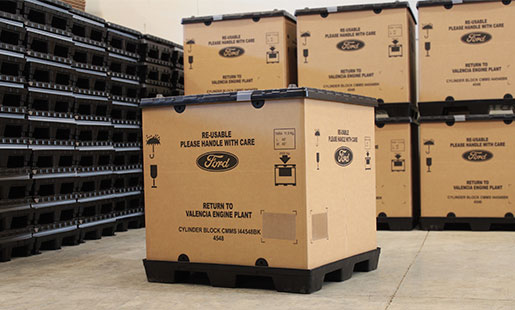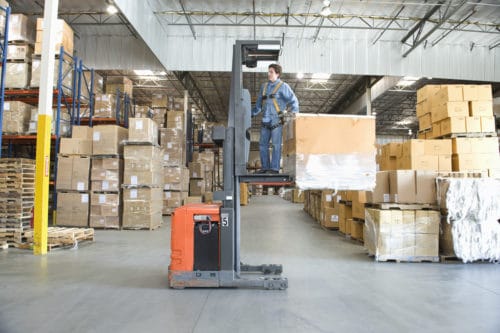Eco-Friendly Practices: Driving Modification with Bulk Container Recycling
Eco-Friendly Practices: Driving Modification with Bulk Container Recycling
Blog Article
Efficient Industrial Recycling Solutions for Lasting Packaging: A Comprehensive Overview
In today's significantly environmentally-conscious globe, the need for lasting packaging solutions has never been greater. To fulfill this need, services across sectors are actively looking for efficient commercial recycling services. However, browsing the complex landscape of lasting packaging can be testing without an extensive guide. That's where this extensive overview on efficient commercial recycling options for lasting product packaging comes in. By checking out crucial locations such as packaging product choice, developing for recyclability, applying recycling infrastructure, collaborating with recycling companions, and tracking and gauging reusing success, this overview will certainly outfit you with the knowledge and tools required to make enlightened decisions and drive favorable modification within your company. Whether you're a product packaging professional, sustainability manager, or simply curious about the topic, this guide will certainly provide important insights and approaches to assist you browse the world of lasting product packaging.
Packaging Material Choice
The selection of packaging products plays a vital role in ensuring the sustainability of industrial reusing options. When it pertains to lasting product packaging, the option of products is essential in minimizing environmental influence and making best use of recycling performance. Choosing the best materials can help in reducing waste generation, save resources, and advertise a circular economic climate.
Materials like cardboard, paper, glass, and specific types of plastics can be recycled multiple times without losing their quality. On the other hand, products that are challenging to recycle, such as non-recyclable compounds or blended plastics, can develop challenges for the recycling process and may end up in incinerators or landfills.
Another consideration is making use of biodegradable and sustainable materials. Packaging made from renewable energies, such as plant-based plastics or biopolymers, can assist lower dependency on nonrenewable fuel sources and alleviate climate adjustment. Furthermore, eco-friendly products break down naturally with time, reducing the buildup of waste in landfills.
Moreover, the weight and volume of product packaging products should be decreased to decrease transport prices and power usage. Lightweight products not only require less sources during production yet additionally contribute to reduce carbon discharges throughout transport.
Creating for Recyclability
In order to ensure the recyclability of packaging materials, thoughtful layout is vital. Creating for recyclability includes producing packaging that can be quickly sorted, divided, and refined in recycling facilities. One important element of creating for recyclability is the selection of products. Packaging developers need to prioritize using products that are commonly approved for reusing and have established reusing infrastructures. Products such as glass, light weight aluminum, and certain sorts of plastic, like pet dog and HDPE, are typically reused and should be favored over products that are difficult or costly to recycle.
One more vital consideration in designing for recyclability is the removal of unneeded components or products. By lessening the variety of layers, finishings, and added elements, product packaging can be made less complex and less complicated to recycle. In addition, designers should intend to minimize using combined products, as they can complicate the recycling process.

Implementing Recycling Facilities
Effective implementation of recycling framework is critical for the success of commercial reusing solutions. Without appropriate facilities in position, the reusing procedure ends up being inefficient and ineffective, hindering the general objective of lasting packaging.
To execute recycling infrastructure properly, numerous vital aspects require to be thought about. To start with, there should be an efficient collection system that assists in the separation and collection of recyclable products. This can consist of marked recycling containers in public rooms, as well as collaborations with waste monitoring companies for curbside pick-up and sorting.
When collected, the recyclable products need to be transferred to recycling facilities in a prompt way. This needs effective logistics and transport networks, making certain that the materials get to the proper facilities immediately.
At the reusing facilities, advanced sorting and processing modern technologies should remain in area to divide different kinds of products properly. This consists of using automated sorting devices, optical scanners, and hand-operated sorting techniques.
Additionally, there ought to be a robust market demand for recycled products. This can be attained via collaborations with suppliers and markets that make use of recycled products in their production processes. Developing a secure market for recycled products incentivizes the reusing industry and promotes the circular economic situation.
Teaming Up With Recycling Partners

One key aspect of collaborating with recycling partners is the facility of clear interaction channels. It is very important to establish open lines of interaction to assist in the exchange of information, updates, and feedback. This allows both parties to stay notified regarding the development of reusing initiatives and address any type of difficulties or issues that might occur.
Additionally, collaboration our website can involve collaborations in implementing and developing recycling programs. Reusing partners can offer useful insights and advice in creating effective collection systems and determining one of the most proper recycling technologies. By collaborating, services and recycling companions can optimize the reusing procedure and decrease waste.
Moreover, collaboration can expand past the operational facets of recycling. It can also include advocacy and education initiatives. By signing up with forces, businesses and recycling companions can elevate understanding concerning the importance of reusing and advertise the fostering of lasting product packaging techniques among consumers and other stakeholders.
Monitoring and Measuring Recycling Success
To make sure the effectiveness of commercial recycling services and the success of lasting product packaging goals, it is important for organizations and their recycling partners to establish a comprehensive system for tracking and determining recycling success (industrial packaging solutions). Tracking and gauging reusing success permits services to analyze the impact of their recycling initiatives, identify locations for enhancement, and set meaningful targets for future progress
One way to track Get the facts recycling success is with the use of data collection and analysis tools. By collecting information on the quantity of product packaging waste generated, the percentage of waste that is recycled, and the sorts of materials being recycled, companies can gain important understandings into their recycling performance. This information can then be evaluated to recognize trends, patterns, and areas of inefficiency.
An additional essential facet of tracking and gauging recycling success is developing standardized and clear metrics. This permits services to compare their performance against market benchmarks and track their development in time. Metrics such as reusing prices, waste diversion rates, and greenhouse gas emissions can give a quantitative measure of a business's reusing success.

Conclusion
To conclude, implementing reliable industrial recycling solutions for lasting product packaging requires mindful consideration of product packaging material option, designing for recyclability, executing recycling infrastructure, teaming up with reusing companions, and tracking and measuring recycling success. By integrating these practices, services can contribute to an extra environmentally-friendly and sustainable strategy to packaging, reducing waste and promoting the circular economic climate.
By checking out vital areas such as product packaging material choice, designing for recyclability, executing reusing facilities, collaborating with recycling partners, and monitoring and measuring reusing success, this guide will outfit you with the understanding and tools essential to make enlightened decisions and drive favorable modification within your organization. Packaging designers must prioritize the usage of materials that are extensively accepted for reusing and have actually developed reusing frameworks.Partnership with recycling companions is necessary for the successful execution of commercial reusing services and the success of sustainable packaging goals. By joining forces, companies and recycling partners can raise recognition about the importance of recycling and promote the fostering of lasting product packaging methods among customers and other stakeholders.
By collecting data on the amount of packaging waste created, the percent of waste that is recycled, and the types of products being recycled, organizations can gain beneficial understandings right into their recycling performance.
Report this page